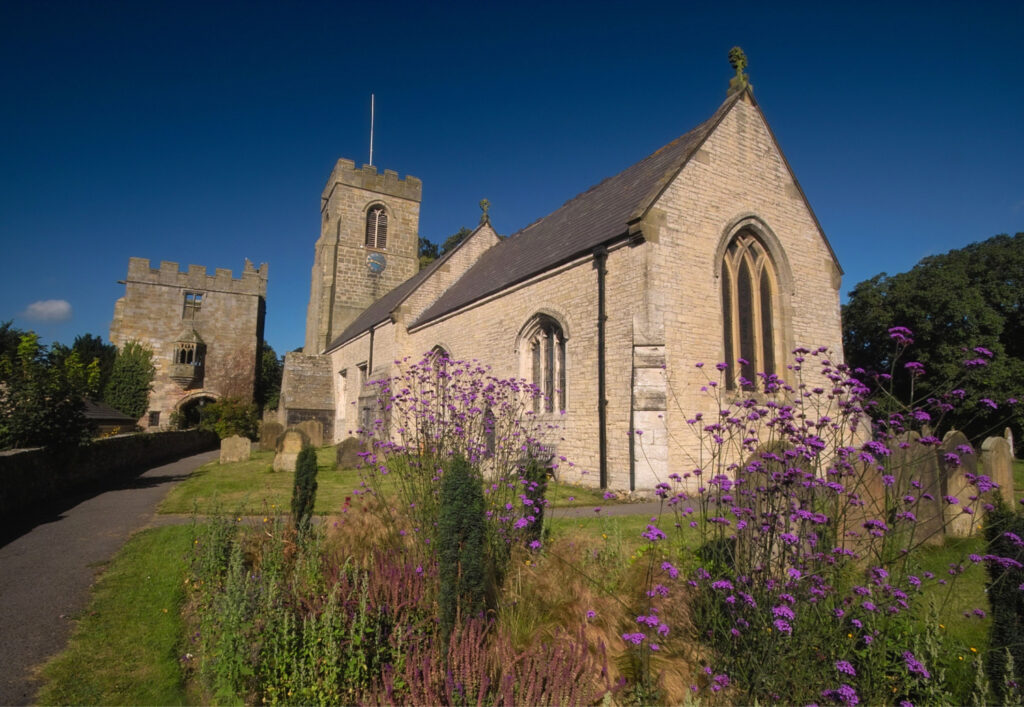Standing like tall soldiers next to one another in the small North Yorkshire village of West Tanfield, are an imposing 15th-century gatehouse and the local church of St Nicholas.

Now a landmark for the surrounding rurality, the tower’s former function is no longer apparent. However, this great square monument, three storeys high, once guarded a grand Manor house which perched beside the River Ure. The Marmion Tower, as it is now colloquially dubbed, was the former entrance to Tanfield Castle, the fortified Manor house and home to knight Sir John Marmion. The Marmion family were the owners of the manor throughout the earlier medieval era but, by the 15th century, it had passed into the hands of the Fitzhughs, who actually constructed the gatehouse in the first place. After the death of William Fitzhugh in 1452, the manor passed by marriage to the influential Parr family, with William Parr, the Marquis of Northampton, brother to Catherine, the sixth wife of Henry VIII, who also resided nearby in Snape Castle with her prior husband.
And the Tudor connection did not stop there. Following the year 1571, the manor was granted to Lord Burghley, also known as William Cecil, who was chief adviser to Henry VIII’s daughter, Queen Elizabeth I.
Though the tower protected a defensive structure, it may also have possessed such a function itself and therefore included a guard room on the ground floor accessed off a barrel-vaulted passageway and grander chambers in the two storeys above which featured fireplaces and garderobes. Still, there is little evidence for a portcullis nor any arrow loops apparent in the walls, so it may simply be a case of form over function. Still, when antiquary John Leland visited the structure in the 16th century, he was so enamoured with the gatehouse that he dismissed the manor itself as a “mean” place.
The gatehouse is also known for the beautiful oriel window within the eastern elevation at first floor level, which overlooks the adjacent church where its former owners now rest. The alabaster tomb and effigies of John Marmion, who died in 1387, and his wife Elizabeth (d.1400), can still be found here surrounded by a wrought-iron hearse or frame, encasing them in eternal slumber.
After later owners the Earls of Ailesbury in the late 19th century, the Arton family purchased the ruinous gatehouse structure which eventually found its way into state ownership in the 1970s and is thus now maintained by English Heritage.